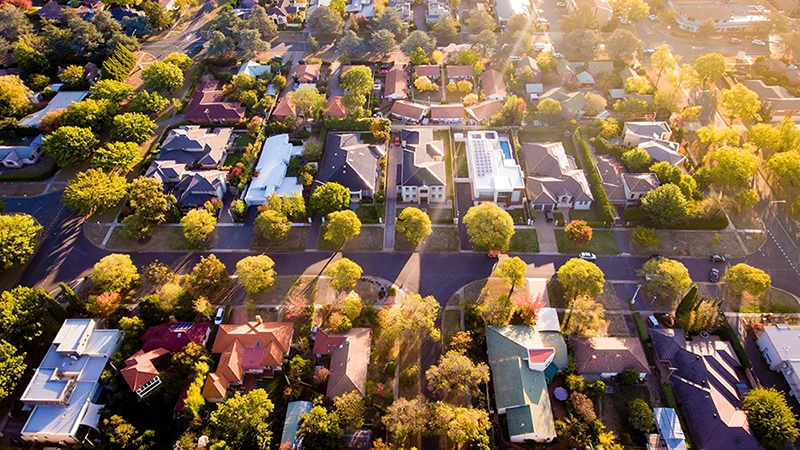Updated: 29 May, 2025
In September, CoreLogic’s Home Value Index (HVI) showed a modest 1.0% rise in national home values, the lowest rise over a rolling three-month period since March 2023. At that time, the market was in the early stages of an upswing, but current conditions indicate that momentum is leaving the market as affordability constraints, interest-rate pressures, and economic factors come into play.
Here’s CoreLogic’s report in full.
State Performance Overview
The following table illustrates how each capital city’s housing market performed during September 2024. While some cities showed positive growth, others experienced declines, highlighting the diversity in market conditions across the country.
| State | September Home Value Change | Description |
|---|---|---|
| Sydney | +0.2% | Sydney recorded only a modest 0.5% increase for the quarter, the slowest growth since early 2023. |
| Melbourne | -0.1% | Melbourne continued its downward trend, with values falling by 1.1% in the September quarter, positioning it as one of the weakest markets. |
| Brisbane | +0.9% | Brisbane showed quarterly growth of 2.7%, its slowest quarterly rise in home values since April 2022. |
| Adelaide | +1.3% | Adelaide’s growth seems to be plateauing, with a 4.0% increase through the September quarter, down from earlier highs. |
| Perth | +1.6% | Perth remained the top performer, with a 4.7% rise in values for the quarter, though this is slower than its growth in previous quarters. |
| Hobart | -0.4% | Hobart recorded a slight decline, continuing the market's softening. |
| Darwin | +0.1% | Darwin showed a minimal 0.1% increase, suggesting stable yet stagnant market conditions. |
| Canberra | -0.3% | Canberra experienced a 0.9% decline for the quarter, reflecting weaker market conditions. |
Regional Markets Vs. Capital Cities
As of September 2024, both capital city and regional housing markets experienced a slowdown in growth. National dwelling values increased by 0.4% for the month and 1.0% for the quarter. Capital cities slightly outperformed regional areas with a 1.1% quarterly increase, while regional markets showed a 1.0% rise. Annual growth in both sets of combined markets remained at 6.7%.
Sydney recorded modest growth, while Melbourne showed declines in both monthly and quarterly values. Brisbane, Adelaide and Perth showed stronger performance, with Perth leading the capitals with a 4.7% quarterly rise and 24.1% annual growth. Regional Western Australia led the regional markets with a 3.6% quarterly increase, followed by Regional South Australia and Queensland at 2.3% and 2.0%, respectively.
Rental Market Overview
The rental market has also shown signs of slowing down. In the September quarter, the national rental index increased by just 0.1%, the smallest change over a rolling three-months in four years. Several major cities, including Sydney, Brisbane and Canberra, experienced a decline in rents, with Sydney down by 0.5%, Brisbane by 0.2%, and Canberra by 0.8%. This decline indicates a clear loss of steam in the rental market, especially compared with the sharp rental growth observed in previous years.
On the other hand, Melbourne and Perth showed modest rental increases of 0.3% during the quarter. However, these figures are a slowdown from a year ago when Melbourne and Perth were recording quarterly rent increases of 2.2% and 2.3%, respectively. The easing in rental growth is probably a result of several factors, including reduced net overseas migration and growing affordability pressures, which are causing households to restructure their living arrangements. Group and multigenerational households are becoming more common, as high rental costs force families and individuals to find more affordable housing solutions.
Market Forecast
- Affordability Challenges To Persist: Despite potential interest-rate cuts, affordability will remain strained unless housing prices drop significantly or wages rise. Expect slow improvement in affordability metrics over the next year.
- Potential Interest Rate Cuts: A rate cut is likely in early 2025, which could boost buyer confidence and borrowing capacity, especially for first-time buyers and investors.
- Increased Property Listings To Continue: As more homes hit the market, expect buyer leverage to improve, leading to longer selling times and softer market conditions for sellers.
- Rental Market To Stabilise: With rental growth slowing, investor activity may help balance supply, but rental yields are expected to remain low, limiting returns for landlords.
- Economic Sentiment Boost: Lower inflation, combined with tax cuts and rebates, will likely improve household confidence and spending capacity, potentially supporting modest market growth.
- Supply Shortages To Keep Prices High: Ongoing construction delays and material shortages will continue to limit new housing supply, keeping pressure on prices despite easing demand.









